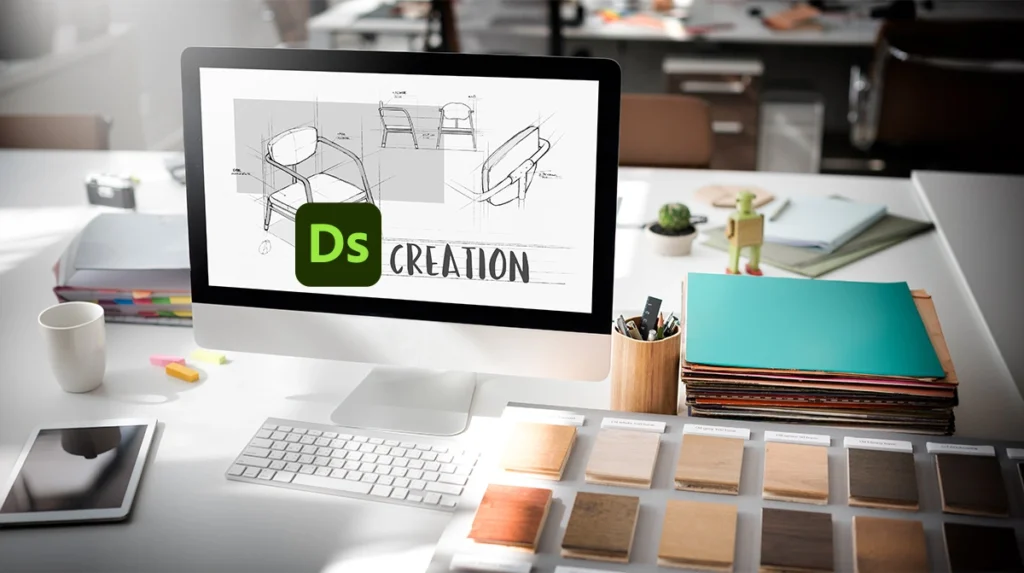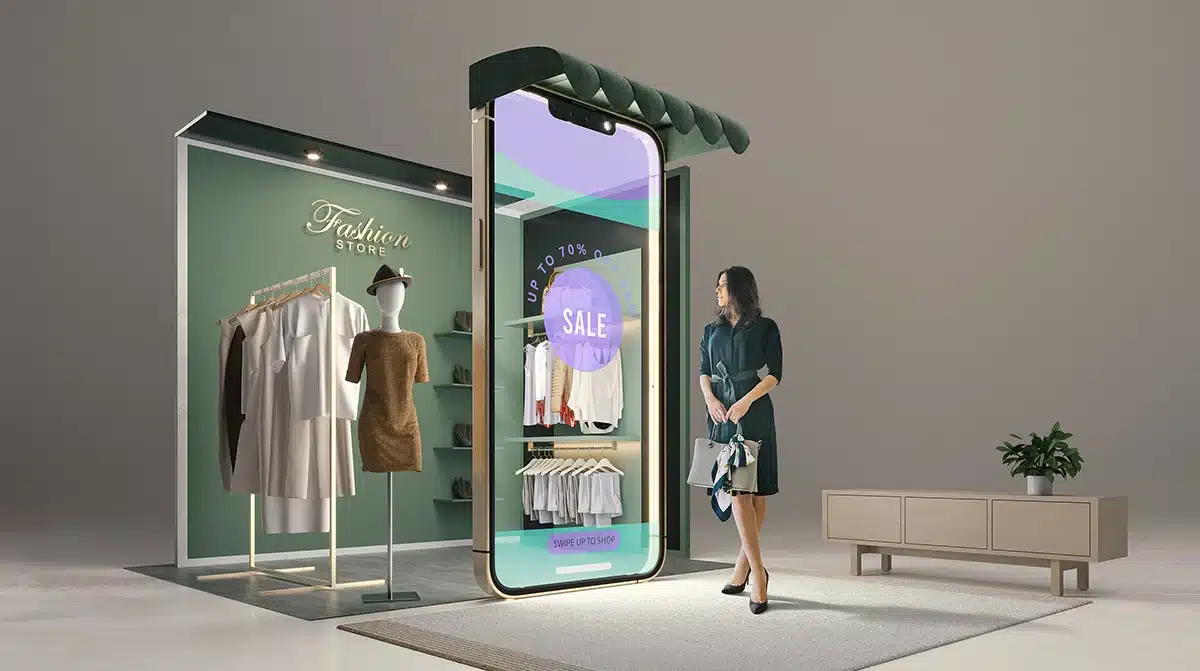The ability to create captivating, lifelike imagery can set a brand apart. With stunning, hyper-realistic 3D designs, businesses can engage audiences, streamline workflows, and push the boundaries of creativity.
In today’s fast-paced digital world, standing out in the crowd is more challenging than ever for brands. With attention spans dwindling, marketers constantly seek innovative ways to captivate audiences and convey their messages effectively.
Adobe Substance 3D is a revolutionary toolset rapidly becoming the secret weapon for marketing professionals aiming to create visually stunning and compelling campaigns. As the digital landscape evolves, incorporating 3D design with the help of Adobe partners into marketing strategies is no longer a luxury but a necessity.
Adobe Substance 3D offers tools that empower marketers to craft hyper-realistic, immersive visuals that resonate with consumers on a deeper level. Substance, 3D Assets library, includes over 20,000 ready-to-use models, Adobe Substance 3D collection, materials, and IBL lights designed by world-class artists.
This blog explores how Adobe Substance 3D transforms marketing, offering benefits beyond traditional design approaches and why it’s a game-changer for those looking to elevate their visual campaigns.

The Power of 3D In Digital Marketing
The most practical use of Adobe Substance is in creating highly realistic 3D models and materials for various industries, such as gaming, film, product design, and fashion. It allows designers to simulate textures, materials, and lighting with exceptional accuracy, enabling them to visualize and iterate on designs before moving to production. Partnering with an AEM development company expert can further enhance digital asset management and content delivery, ensuring seamless integration with Adobe’s creative tools. This enhances the creative process and reduces the need for physical prototypes, saving time and resources while maintaining high-quality outputs.
3D content in marketing is not just a trend; it’s a transformative approach to redefining how brands engage with their audiences. 3D models and visualizations allow for a level of interaction and realism that traditional 2D images simply cannot match. Whether it’s creating lifelike product models for eCommerce or crafting immersive experiences in digital ads, 3D content has the power to captivate and engage consumers more effectively.
For instance, global brands like IKEA and Nike have integrated 3D design into their marketing strategies, offering interactive product views and augmented reality experiences that allow customers to see how a product would fit in their own space or look on them. These examples highlight the competitive advantage that 3D content offers in creating personalized and engaging customer experiences.
Moreover, 3D content enables brands to visualize products and concepts that may not even exist yet, offering unparalleled flexibility in marketing campaigns. This ability to pre-visualize products before they go to market can significantly reduce time-to-market and costs associated with product photography and prototyping.
What Is Adobe Substance 3D?
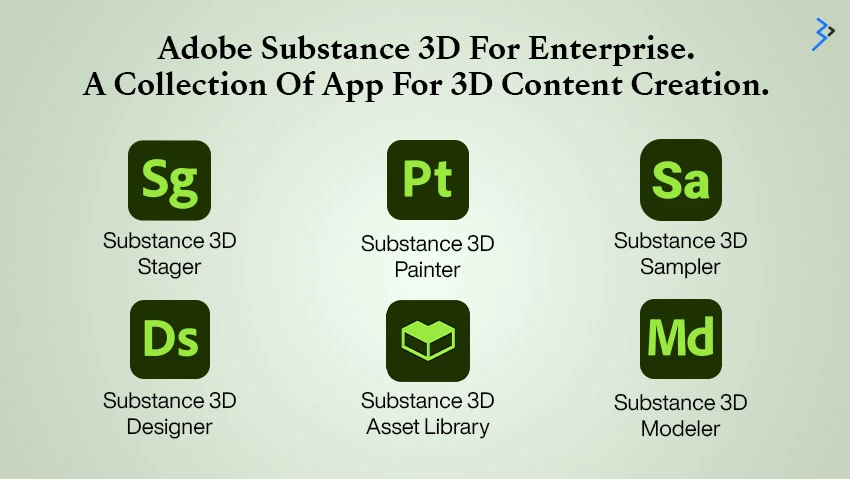
Adobe Substance 3D is a comprehensive suite of tools designed for creating, texturing, and rendering high-quality 3D assets. The suite includes four main applications: Substance 3D Designer, Substance 3D Painter, Substance 3D Sampler, and Substance 3D Stager. Each tool is crucial in 3D design, from creating detailed textures and materials to rendering and staging complex scenes. Partnering with an AEM development company can help businesses integrate these advanced 3D tools seamlessly into their digital experiences, enhancing visual storytelling and engagement.
- Substance 3D Designer: This is the backbone of the Adobe Substance 3D ecosystem. It allows users to create intricate textures and materials from scratch. Its node-based workflow offers unparalleled flexibility, allowing users to create everything from simple patterns to complex, photorealistic surfaces.
- Substance 3D Painter: A powerful tool for applying textures and materials to 3D models. Substance 3D Painter is widely used in the gaming and film industries for its ability to create detailed, realistic textures easily.
- Substance 3D Sampler: This tool allows users to turn real-world images into photorealistic materials. It bridges the gap between physical and digital materials by capturing the nuances of real-world surfaces, enabling more realistic 3D models.
- Substance 3D Stager: The final step in the workflow, Substance 3D Stager, renders and stages 3D scenes. It allows marketers to place 3D models in various environments, adjust lighting, and create photorealistic renderings for marketing materials.
These tools integrate seamlessly with other Adobe Creative Cloud applications, such as Photoshop and Illustrator, ensuring a smooth workflow from concept to final render.
Adobe Substance 3D In Action
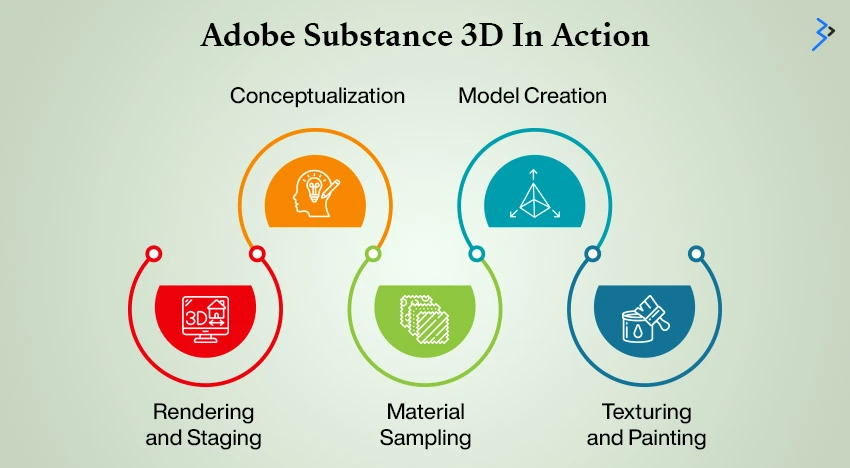
Using Adobe Substance 3D in marketing campaigns involves a few strategic steps to create highly engaging content. Here’s a step-by-step guide on how marketing professionals can leverage this toolset:
- Conceptualization:
- Start by defining your campaign’s visual narrative. What story does your brand want to tell? Then, determine the key elements of the 3D modeling Adobe that will resonate with your target audience.
- Model Creation:
- Create the base textures and materials using Adobe Substance 3D Designer. Then, use the node-based system to experiment with different patterns and finishes until you achieve the desired look.
- Texturing and Painting:
- Import the model into Substance 3D Painter. Here, you can apply the textures and adjust them in real-time, allowing for an iterative process that ensures every detail aligns with the campaign’s vision.
- Material Sampling:
- Use Substance 3D Sampler to incorporate real-world materials into your model. This step is crucial for achieving photorealism, making your 3D models indistinguishable from natural products.
- Rendering and Staging:
- Finally, bring your model into Substance 3D Stager. Here, you can place it within a virtual environment, adjust lighting, and render the final image. Stager’s flexibility allows you to create multiple scenes and angles, providing a variety of visual assets for your campaign.
Notable Success Stories
Coca Cola Venture
When Coca-Cola ventured into the U.S. alcoholic beverage market with Topo Chico Hard Seltzer, the global design team seized the opportunity to push creative boundaries. Embracing the freedom of a new brand, the team, led by Abreu, leveraged Adobe Substance 3D Stager to bring their bold design concepts to life rapidly.
This innovative tool enabled them to experiment and visualize ideas compellingly, playing a crucial role in the successful launch and visual identity of Topo Chico Hard Seltzer.
Hugo Boss
Hugo Boss revolutionized its design process by leveraging Adobe Substance to achieve an 85% faster creation-to-shelf timeline, drastically reducing the typical one-year timeline to six to eight weeks.
By digitizing 64% of its design workflows and creating 30% fewer physical samples per collection, Hugo Boss accelerated its time to market and made significant strides toward sustainability. The use of photorealistic 3D models allowed the brand to eliminate the need for multiple rounds of sample garments, minimizing physical waste and reducing the environmental impact of production.
- Nike used Adobe Substance 3D to create realistic 3D models of its new sneaker line. This allowed them to produce high-quality promotional materials faster and cheaper than traditional methods.
- IKEA leveraged 3D models in their augmented reality app, allowing customers to visualize how furniture would look in their homes before purchasing.
Creating Immersive Visual Campaigns
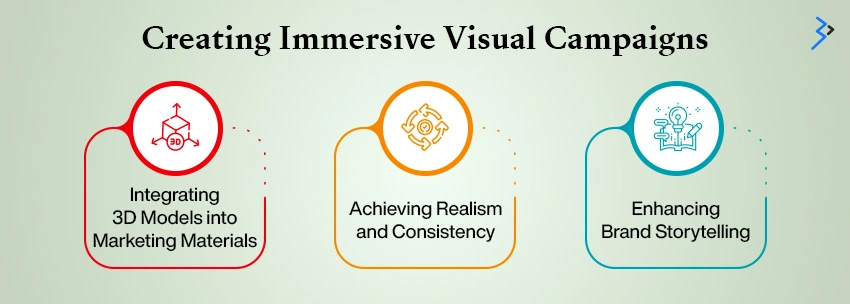
Adobe Substance 3D empowers marketers to create campaigns that are not only visually striking but also immersive and interactive. Here are some techniques and tips to maximize the impact of your 3D visual campaigns:
- Integrating 3D Models into Marketing Materials:
- Use 3D models to center your digital ads, social media posts, or website visuals. The realism and depth of 3D content can significantly enhance the visual appeal and engagement rates.
- Achieving Realism and Consistency:
- Pay attention to lighting, shadows, and material properties to ensure your 3D models look realistic. Consistency across different assets is critical to maintaining a cohesive brand image.
- Enhancing Brand Storytelling:
- Utilize the power of 3D to tell a more engaging story. For example, show the evolution of a product through different stages of development or use interactive 3D models that allow customers to explore features in detail.
Adobe 3D assets can be a game-changer in this context, providing ready-made materials, textures, and models that can be quickly adapted to fit your brand’s needs. This speeds up the design process and ensures that your visuals are of the highest quality.
Enhancing Brand Identity
Marketers must maintain a consistent brand identity across various platforms and media. Adobe 3D Modeling Software enables brands to achieve this by providing tools that ensure uniformity in texture, material, and design across all assets. Whether creating a digital billboard, an online ad, or a product visualization, Adobe Substance 3D helps brands maintain their unique identity while adapting to different formats.
This consistency reinforces brand recognition and consumer trust, strengthening brand loyalty. Through Adobe Substance 3D, marketers can easily create a cohesive visual language that communicates their brand’s values and message across all touchpoints.
Personalizing Customer Experiences
Personalization is key in today’s marketing, and 3D design offers unprecedented opportunities to tailor experiences to individual customers. With Adobe Substance 3D, marketers can create customizable 3D models that adapt to the preferences and needs of each customer. For example, a furniture company can allow customers to visualize a piece’s look in different materials, colors, and settings.
This level of personalization enhances the customer experience and increases the likelihood of conversion. By offering a more interactive and personalized experience, brands can foster deeper connections with their audience, leading to higher customer satisfaction and loyalty.
Benefits of Using Adobe Substance 3D for Marketers
The benefits of Adobe Substance 3D extend far beyond just cost savings:
- Cost-Effectiveness:
- Traditional photography and videography can be expensive, especially involving multiple locations, props, and post-production. The 3D design eliminates many of these costs, allowing for more efficient budget allocation.
- Flexibility in Design:
- 3D models can be easily adjusted, customized, and iterated. This flexibility allows marketers to quickly respond to feedback or changing market conditions, ensuring that campaigns remain relevant and impactful.
- Collaboration and Workflow:
- Adobe Substance 3D’s integration with other Adobe Creative Cloud tools fosters team collaboration. Designers, marketers, and developers can work together seamlessly, ensuring the final output meets the campaign’s objectives.
Adobe Substance 3D vs. Traditional Design Tools
Comparing Adobe Substance 3D with traditional 2D design tools highlights several key advantages for marketers:
- Product Visualization:
- While 2D designs are limited by perspective and depth, 3D models provide a comprehensive view of products. This is especially beneficial in eCommerce, where customers appreciate the ability to examine products from all angles.
- Interactivity:
- 3D designs allow for interactive elements in digital marketing, such as rotating models, zooming in on details, or changing product colors. This level of engagement is difficult to achieve with traditional 2D tools.
- Integration:
- Adobe Substance 3D integrates seamlessly with Photoshop, Illustrator, and other Creative Cloud tools, allowing for a cohesive workflow. This integration ensures that all assets, whether 2D or 3D, are consistent and aligned with the overall brand aesthetic.
Substance3D design offers more engaging and versatile options for marketers.
| Feature/Aspect | Traditional 2D Visuals | 3D Visuals with Adobe Substance 3D |
| Visual Appeal | Flat and static, limited depth | Immersive, dynamic, realistic depth |
| Interactivity | Minimal interactivity | High interactivity, customizable views |
| Production Time | Faster for simple designs | Longer but with advanced detailing |
| User Engagement | Moderate can be less engaging | High, more engaging, and captivating |
| Versatility Across Platforms | Limited adaptability | Highly adaptable to various platforms |
| Cost Efficiency | Lower initial cost | Higher ROI due to increased engagement |
The Role Of Adobe Substance 3D In eCommerce
eCommerce has become a dominant force in retail, and the integration of 3D design is transforming the online shopping experience. Adobe Substance 3D allows eCommerce businesses to create detailed product visualizations that give customers a better understanding of the product before purchasing.
This reduces the uncertainty that often leads to cart abandonment and returns. Additionally, 3D models can create virtual try-ons or room planners, further enhancing the shopping experience. By leveraging the 3D Substance of Adobe Commerce development, businesses can improve customer satisfaction, increase conversion rates, and reduce return rates, ultimately driving revenue growth.
3D Design In Social Media
Social media is a crucial platform for marketing, and the use of 3D design can significantly boost engagement. Eye-catching 3D visuals stand out in crowded feeds, attracting more likes, shares, and comments. Adobe Substance 3D enables marketers to create dynamic content that can be easily adapted for various social media platforms.
Whether it’s a 3D animation, a product teaser, or an interactive post, 3D content can capture the attention of social media users and encourage them to interact with the brand. By integrating 3D design into their social media strategy, brands can increase their visibility, enhance user engagement, and drive more website traffic.
Future Of 3D Design In Marketing
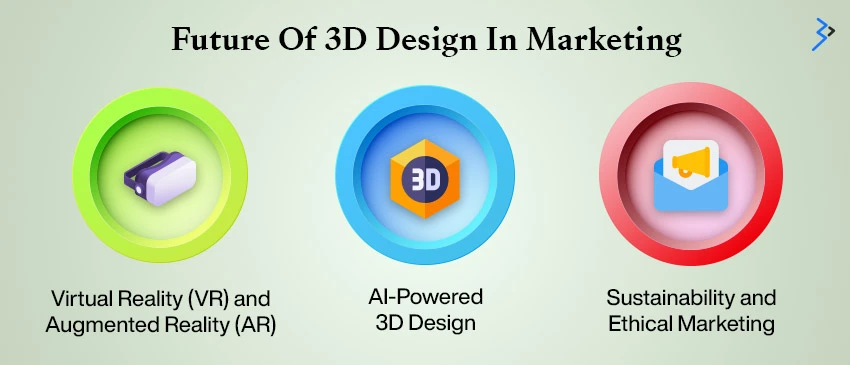
The future of 3D design in marketing is bright, with several trends indicating its growing importance:
- Virtual Reality (VR) and Augmented Reality (AR):
- As VR and AR technologies continue to evolve, 3D models created in Adobe Substance 3D will play a crucial role in creating immersive experiences. Brands can use VR and AR to offer virtual try-ons, product demonstrations, and interactive brand experiences.
- AI-Powered 3D Design:
- Integrating AI with 3D design tools could further enhance the efficiency and creativity of marketing campaigns. AI could assist in automating routine tasks, suggesting design improvements, and generating 3D models based on consumer preferences.
- Sustainability and Ethical Marketing:
- With increasing consumer demand for sustainability, 3D design offers a more environmentally friendly alternative to traditional marketing. By reducing the need for physical prototypes and photo shoots, brands can lower their carbon footprint and promote more ethical marketing practices.
In an increasingly competitive market, staying ahead of the curve is essential for success. Adobe Substance 3D offers marketers the tools they need to create compelling visual campaigns that resonate with today’s tech-savvy consumers. The ability to produce high-quality 3D content quickly and efficiently gives brands a competitive edge, allowing them to innovate and differentiate themselves from competitors.
As 3D design continues gaining traction in marketing, early adopters of Adobe Substance 3D will be better positioned to capitalize on this trend. By embracing Adobe Substance 3D now, marketers can ensure their campaigns remain relevant, engaging, and impactful in the ever-evolving digital landscape.
Overcoming Common Challenges In 3D Design
Adopting 3D design in marketing comes with its own set of challenges. One of the primary concerns is the learning curve associated with mastering new software. Adobe Substance 3D addresses this by offering intuitive tools and a user-friendly interface that simplifies the design process. The 3D Adobe Software also provides extensive resources, including tutorials and templates, to help users get up to speed quickly.
Another challenge is the time and effort required to create high-quality Adobe 3D assets. Adobe Substance 3D’s efficient workflow and powerful rendering capabilities reduce production time while ensuring top-notch quality. By overcoming these challenges, marketers can fully leverage the potential of 3D design in their campaigns.
Takeaway
Adobe Substance 3D is more than just a design tool; it’s a catalyst for innovation in marketing. By embracing 3D design, marketers can create campaigns that are not only visually stunning but also highly engaging and effective. The flexibility, cost-effectiveness, and potential for interactivity make Adobe Substance 3D an essential tool for any marketing professional looking to stay ahead of the curve.
As the digital landscape continues to evolve, those who leverage the power of 3D design will be best positioned to capture and retain the attention of today’s increasingly discerning consumers. Now is the time for marketers to explore the vast possibilities that Adobe Substance 3D offers and to integrate this cutting-edge technology into their campaigns for maximum impact.
Related Articles
-
Adobe Commerce 2.4.7 Release – How it’s Beneficial to Your Business?
dobe commerce 2.4.7 features
-
Building Virtual Storefronts: What Brands Need to Know About Metaverse Retail
Imagine stepping into a store where the walls shift with your preferences, products come alive with interactive stories, and your avatar can try on outfits before you buy them—all without
-
How to Create a Successful Online Store as an Entrepreneur in 2023
The retail industry is undergoing a significant transformation. With the rise of e-commerce and online shopping, traditional brick-and-mortar stores struggle to compete. However, it is not all doom and gloom

